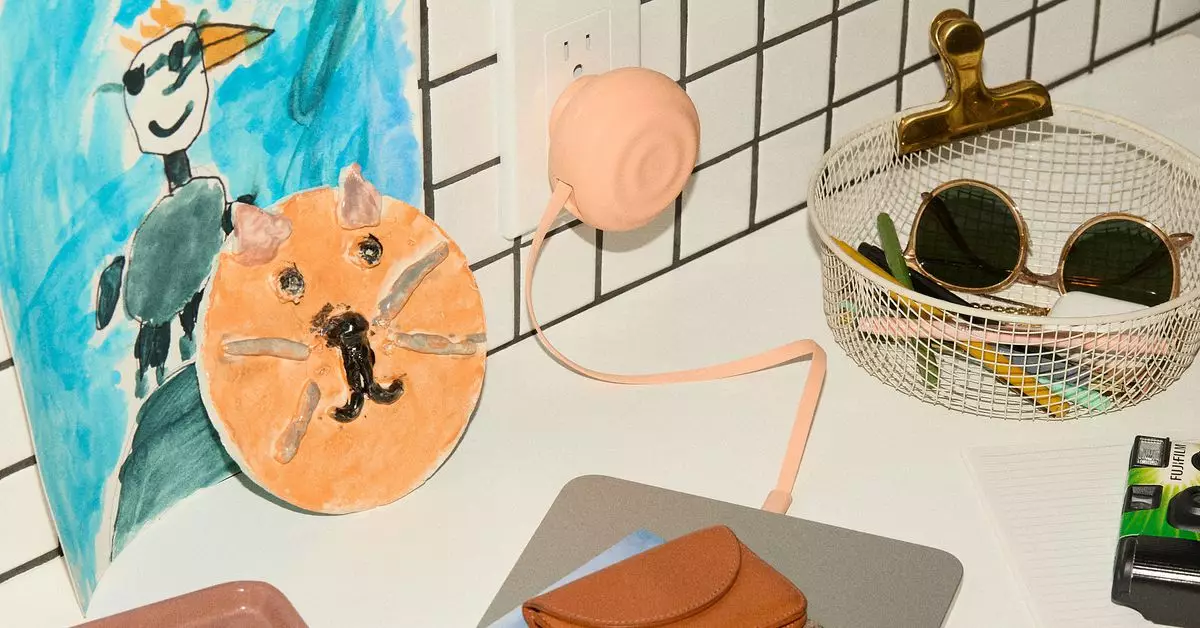In a world increasingly dominated by technology and the multitude of gadgets that accompany modern living, the clutter of charging cables has become a significant nuisance. For families, these tangled wires often resemble a chaotic mess rather than efficient charging solutions. Enter the Counterpart Charger—a product that promises to alleviate common frustrations associated with charging devices, marrying functionality with aesthetics. As homes evolve into smart ecosystems filled with various electronic devices, finding a balance between form and function becomes paramount, and the Counterpart Charger is at the forefront of this budding trend.
One standout feature of the Counterpart Charger is its retractable USB-C cable. The ability to neatly store the cable with the push of a button is not just practical; it introduces a new dimension to home organization. This design choice directly addresses the urgent need for more space-efficient solutions in our homes while simultaneously reducing visual clutter. At 35 Watts, this charger can handle the demands of numerous devices—phones, tablets, and even laptops—making it a versatile tool in a family setting.
However, the appeal of the Counterpart Charger isn’t purely based on utility; it stretches into the realm of aesthetics. Traditionally, chargers come in standard shapes and colors—veritable eyesores in our homes. By incorporating a soft silicon exterior and offering multiple color options, the Counterpart Charger feels less like a gadget and more like a decorative element. This approach resonates particularly well with consumers who seek quality design in every facet of their homes, moving past the uninspiring, utilitarian hardware of years past.
While the Counterpart Charger boasts impressive features, potential buyers should consider several aspects before moving forward with their purchase. One significant concern is the non-removable nature of the built-in cable. If wear and tear impact the cable over time, users may be forced to discard the entire charger, prompting questions regarding longevity and sustainability. Although the manufacturer offers a two-year warranty—a thoughtful inclusion—it raises legitimate concerns about how this design will hold up over time, a common issue among tech products.
Consumer habits also play a role in how we interact with chargers. Even in a well-designed space, a single outlet may not suffice, particularly for large households with multiple devices vying for power. It prompts a consideration: would the inclusion of an additional cable have better served consumers? The value of flexibility in charging solutions is as critical as the aesthetic appeal. Thus, one must weigh the stylish appearance against practical needs, especially in a world where power outlets are increasingly at a premium.
Despite these concerns, the Counterpart Charger signifies a notable shift in how we think about device charging. Its innovative design emblemizes a growing demand for tech products that blend seamlessly into our homes while addressing functional needs. The backing of a talented designer like Chloe Fields further emphasizes that the product is the result of thoughtfulness and creativity.
Pre-orders for the product signal a warm reception from tech-savvy consumers, indicating a readiness to embrace a device that promises both utility and elegance. As we anticipate its release, the discussion around the Counterpart Charger extends beyond its features; it invites us to reconsider the aesthetics of technology in our homes.
Ultimately, as we forge ahead into an increasingly tech-centric future, products like the Counterpart Charger may just be the beginning of an aesthetic revolution that elevates our everyday gadgets from mere tools to integral components of our living spaces. If the Charger lives up to its promise, it could set a new standard for how we design and utilize charging equipment in our homes, encouraging other manufacturers to rethink their approach and design philosophy.

